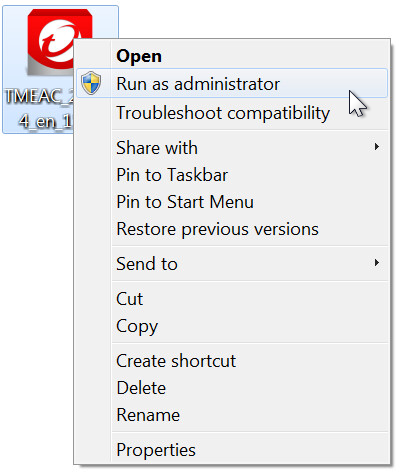

- #Syncthing run as administrator how to#
- #Syncthing run as administrator archive#
- #Syncthing run as administrator software#
On this tutorial we learned how to install and configure Syncthing, a very handful application which let us keep one or more directories synchronized between multiple devices, without the need to use a “central” server. Once the file is in place, we run the following command to enable the service: $ systemctl -user enable rvice

We create the ~/.config/systemd/user directory if it doesn’t already exist, and copy the file inside it: $ mkdir -p ~/.config/systemd/user & cp /usr/lib/systemd/user/rvice ~/.config/systemd/user If we installed Syncthing from the native repositories of our Linux distribution, such file should be: /usr/lib/systemd/user/rvice if we downloaded the tarball from the official Syncthing site, the file should be found inside the etc/linux-systemd/user directory. The first thing we want to do is to copy the systemd service file into the appropriate directory. When a service is configured this way, it will be started only once the user logs in. In this case we will start it as a per-user service, so we won’t need administrative privileges. To make the Syncthing daemon start automatically, we can use Systemd, which is the Linux init manager. The output of the command above is the following: syncthing To gather information about the service, and see what ports are included in it, we can run: $ sudo firewall-cmd -info-service=custom If we want to add the service to a specific zone, we should specify it with the -zone option, passing the zone name as argument. Notice that with the command above, since no zone is specified, the service will be added to the “default” one. If using Firewalld, to activate the service, and thus to enable traffic through the required ports), we should run: $ sudo firewall-cmd -permanent -add-service=syncthing & sudo firewall-cmd -reload Recent versions of the Firewalld and Ufw firewall managers, already come with a pre-configured service for Syncthing (here with the word “service” we mean a defined set of rules). Setting up the firewallīefore we run Syncthing, for it to work correctly, we must setup some firewall rules in order to allow incoming traffic through certain ports.
#Syncthing run as administrator software#
If we are using Debian or Ubuntu, we can also add the official repository to our software sources, and then install it using apt.
#Syncthing run as administrator archive#
We should download the archive containing the version compatible with the architecture of our system. The second method of installing Syncthing consists into downloading the dedicated Linux tarball from the downloads section of the official site. Obtaining the software it’s just a matter of launching our terminal emulator and run: $ sudo pacman -Sy syncthing On Archlinux we can use pacman to install the syncthing package, which is part of the “Community” repository. On Debian and its many derivatives, instead, we can run: $ sudo apt install syncthing To install Syncthing on Fedora, we can use the dnf package manager, and issue the following command: $ sudo dnf install syncthing This is always the recommended way to obtain software the only problem is that, especially on distributions like Debian “stable”, the repository can contain outdated versions of the packages.

Syncthing is available in the native repositories of the most used Linux distributions, such as Fedora, Debian/Ubuntu, and Archlinux, therefore we can easily install it with our favorite package manager. Additionally, only if using Debian or Ubuntu, we can add the official Syncthing repository as an additional software source and install the package from it. There are basically two methods we can use to install Syncthing in our favorite Linux distribution: we can use the version packaged in the native repositories, or we can download a tarball from the official Syncthing website.


 0 kommentar(er)
0 kommentar(er)
